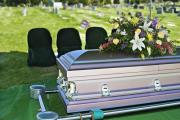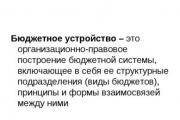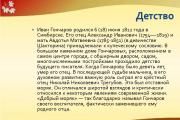Russian hydrofoils: for the first time in the 21st century. Hydrofoil "Comet" Hydrofoil "Comet"
Having risen above the surface of the water, these ships rush past at the speed of an express train; At the same time, they provide their passengers with the same comfort as on a jet airliner.
In the Soviet Union alone, the leading country for ships of this class, hydrofoil ships of various types annually transported more than 20 million passengers on regular lines.
In 1957, the first Project 340 “Raketa” left the Feodosia shipyard in Ukraine. The ship was capable of reaching an unheard-of speed of 60 km/h at that time and carrying 64 people. 
Following the “Rockets” in the 1960s, larger and more comfortable twin-propeller “Meteors” appeared, produced by the Zelenodolsk Shipyard. The passenger capacity of these ships was 123 people. The ship had three salons and a buffet bar. 

In 1962, Project 342m “Comets” appeared, essentially the same “Meteors”, only modernized for operation at sea. They could walk at a higher wave, had radar equipment (radar) 

In 1961, simultaneously with the launch of the Meteors and Comets series, the Nizhny Novgorod shipyard "Krasnoe Sormovo" launched the Project 329 ship "Sputnik" - the largest SPC. It carries 300 passengers at a speed of 65 km/h. Just like with Meteor, they built a naval version of Sputnik, called the Whirlwind. But during four years of operation, a lot of shortcomings were revealed, including the great gluttony of four engines and the discomfort of passengers due to strong vibration. 
For comparison, “Sputnik” and “Rocket” 
Sputnik is now...
In Togliatti they turned it into either a museum or a tavern. In 2005 there was a fire. Now it looks like this. 

"Burevestnik" is one of the most beautiful ships in the entire series! This is a gas turbine vessel developed by R. Alekseev’s Central Design Bureau SPK, Gorky. "Burevestnik" was the flagship among river SPCs. It had a power plant based on two gas turbine engines borrowed from civil aviation (from the Il-18). It was operated from 1964 until the end of the 70s on the Volga on the route Kuibyshev - Ulyanovsk - Kazan - Gorky. The Burevestnik accommodated 150 passengers and had an operating speed of 97 km/h. However, it did not go into mass production - two aircraft engines made a lot of noise and required a lot of fuel. 
It has not been used since 1977. In 1993 it was cut into scrap. 
In 1966, the Gomel Shipyard produced a vessel for shallow rivers, just over 1 meter deep, “Belarus”, with a passenger capacity of 40 people and a speed of 65 kilometers per hour. And from 1983, it will produce a modernized version of the Polesie, which can already carry 53 people at the same speed. 

Rockets and Meteors were getting old. New projects were created at the R. Alekseev Central Clinical Hospital. In 1973, the Feodosia Shipyard launched the second-generation Voskhod SPK.
Voskhod is the direct receiver of the Rocket. This vessel is more economical and more spacious (71 people). 

In 1980, at the Shipyard named after. Ordzhonikidze (Georgia, Poti) production of the Kolkhida agricultural production complex opens. The speed of the vessel is 65 km/h, the passenger capacity is 120 people. In total, about forty ships were built. Currently, only two are in operation in Russia: one ship on the St. Petersburg - Valaam line, called “Triada”, the other in Novorossiysk - “Vladimir Komarov”. 

In 1986, in Feodosia, the new flagship of the marine passenger SPK, the double-deck Cyclone, was launched, which had a speed of 70 km/h and carried 250 passengers. Operated in Crimea, then sold to Greece. In 2004, he returned to Feodosia for repairs, but is still standing there in a semi-disassembled state. 

MOSCOW, June 17 – RIA Novosti. Russia has resumed production of high-speed sea passenger hydrofoil ships of the "Kometa" type, said Transport Minister Maxim Sokolov. Greece is already showing interest in the project; they are ready to accept such vessels on the Black Sea coast of Russia.
The new Comets were discussed at a meeting of the co-chairs of the Russian-Greek mixed commission on economic, industrial, scientific and technical cooperation in Crete. The head of the Russian Ministry of Transport was asked whether sales of Komets to Greece, which purchased them thirty years ago, have resumed. To this Sokolov replied: “There are no sales yet, but production of the Comets has resumed.”
However, now the ship has received a different name, he clarified.
“We even called it the beautiful name “Chaika”, because it was laid down in Rybinsk in the Yaroslavl region, where Valentina Vladimirovna Tereshkova works as a deputy. You remember that her call sign during the flight into space was “Chaika”. Therefore, this “Comet” received name "Chaika". Now it is almost ready. Therefore, if Greek companies want to purchase it, then the contract, in my opinion, is still open," Sokolov said.
As for the purchase of Komets by Greece, according to the minister, he is ready to assist them.
“We will be happy. And although shipbuilding is the competence of the Ministry of Industry, I, as the Minister of Transport and as co-chairman of the mixed commission, am ready to support any proposals from Greece,” said the head of the Ministry of Transport.
As RIA Novosti learned, Vympel Shipyard JSC in Rybinsk is cooperating with the Greek company Argonautiki Ploes on the construction and transfer of the Comet 120M. Negotiations are currently underway with a potential Greek customer on the signing of an agreement of mutual understanding, in which reflects the main terms of the contract for the construction of four such vessels.The cost of each vessel exceeds six million euros.
At the Black Sea
There is interest in the new "Comets" not only in Greece, but also in Russia itself. At the end of April, President Vladimir Putin visited the Vympel plant in Rybinsk. During the meeting, the general director of the enterprise, in particular, told the head of state about the project to launch a hydrofoil ship between Yalta and Sochi.
Putin noted that this proposal is not the only one; several other shipbuilding companies in different regions are offering similar projects.
“The Ministry of Transport and the Ministry of Industry have the opportunity to conduct quasi-competitive or competitive procedures and choose the best proposal. But I really like the proposal itself,” the president said, noting that the plan can be implemented with some support from the state in the form of benefits for leasing
At the same time, Putin added that the Sochi-Yalta route is difficult in terms of weather conditions, since hydrofoils are dangerous to use in strong winds. But such ships can be sent to other routes on the Caucasian coast or in Crimea, this type of transport needs to be developed, it will be in demand, the president concluded.
Anapa is ready to host Comets
The other day, Rosmorport General Director Andrei Tarasenko said that preparations are already underway for the resumption of Komet flights along the Black Sea coast. According to him, an enterprise has already been created in Anapa that will be fully responsible for passenger transportation.
“Previously it was unprofitable, but now we have received applications, in particular from the Black Sea High-Speed Lines company, that many are interested in coming from Anapa to Sochi, many want to come to Yalta. Therefore, we are resolving the issue. I will not say exactly when this will be. Now the companies they receive licenses, there is a large set of documents for obtaining equipment,” Tarasenko said.
Passenger traffic will show whether this route will be popular and regular, he added.
Updated "Comet"
Production of Komets at the Rybinsk plant was interrupted for almost two decades, but in 2013 the company began building hydrofoils again.
Then Maxim Sokolov, speaking at the laying ceremony of the first of the updated Komets, noted that the ships would be built using completely new technologies. According to him, the implementation of such developments will provide new opportunities for transporting passengers not only along the largest rivers of Russia, but also in the Black Sea basin and the Baltic Sea basin.
The high-speed hydrofoil "Kometa 120M" is designed to transport passengers in the coastal sea zone. The vessel, about 35 meters long and with a displacement of 73 tons, will be able to reach speeds of up to 35 knots and carry up to 120 passengers: 22 in business class, 98 in economy class.
Russia resumed production of hydrofoils June 17th, 2017

I was recently in Kazan and several times passed by the river technical school, in the courtyard of which there was a full-fledged "Rocket". I thought back then, those were the times...
And then I read that the Vympel shipyard (Rybinsk, Yaroslavl region) plans to launch the Project 23160 marine passenger hydrofoil ship "Kometa 120M" in 2017.
That is, we can say that Russia has resumed the production of high-speed sea passenger hydrofoil ships of the "Kometa" type. Greece is already showing interest in the project; they are ready to accept such ships on the Black Sea coast of Russia.
The new Comets were discussed at a meeting of the co-chairs of the Russian-Greek mixed commission on economic, industrial, scientific and technical cooperation in Crete. The head of the Russian Ministry of Transport was asked whether sales of Komets to Greece, which purchased them thirty years ago, have resumed. To this Sokolov replied: “There are no sales yet, but production of the Comets has resumed.”
However, now the ship has received a different name, said Transport Minister Maxim Sokolov.
Photo 2. 
“We even called it the beautiful name “Chaika”, because it was laid down in Rybinsk in the Yaroslavl region, where Valentina Vladimirovna Tereshkova works as a deputy. You remember that her call sign during the flight into space was “Chaika”. Therefore, this “Comet” received name "Chaika". Now it is almost ready. Therefore, if Greek companies want to purchase it, then the contract, in my opinion, is still open," Sokolov said. As for the purchase of Komets by Greece, according to the minister, he is ready to assist them.
“We will be happy. And although shipbuilding is the competence of the Ministry of Industry, I, as the Minister of Transport and as co-chairman of the mixed commission, am ready to support any proposals from Greece,” said the head of the Ministry of Transport.
Photo 3. 
As RIA Novosti learned, Vympel Shipyard JSC in Rybinsk is cooperating with the Greek company Argonautiki Ploes on the construction and transfer of the Comet 120M. Negotiations are currently underway with a potential Greek customer on the signing of an agreement of mutual understanding, in which reflects the main terms of the contract for the construction of four such vessels.The cost of each vessel exceeds six million euros.
Photo 4. 
There is interest in the new "Comets" not only in Greece, but also in Russia itself. At the end of April, President Vladimir Putin visited the Vympel plant in Rybinsk. During the meeting, the general director of the enterprise, in particular, told the head of state about the project to launch a hydrofoil ship between Yalta and Sochi.
Putin noted that this proposal is not the only one; several other shipbuilding companies in different regions are offering similar projects.
“The Ministry of Transport and the Ministry of Industry have the opportunity to conduct quasi-competitive or competitive procedures and choose the best proposal. But I really like the proposal itself,” the president said, noting that the plan can be implemented with some support from the state in the form of benefits for leasing
Photo 5. 
At the same time, Putin added that the Sochi-Yalta route is difficult in terms of weather conditions, since hydrofoils are dangerous to use in strong winds. But such ships can be sent to other routes on the Caucasian coast or in Crimea, this type of transport needs to be developed, it will be in demand, the president concluded.
Anapa is ready to host Comets
The other day, Rosmorport General Director Andrei Tarasenko said that preparations are already underway for the resumption of Komet flights along the Black Sea coast. According to him, an enterprise has already been created in Anapa that will be fully responsible for passenger transportation.
“Previously it was unprofitable, but now we have received applications, in particular from the Black Sea High-Speed Lines company, that many are interested in coming from Anapa to Sochi, many want to come to Yalta. Therefore, we are resolving the issue. I will not say exactly when this will be. Now the companies they receive licenses, there is a large set of documents for obtaining equipment,” Tarasenko said.
Passenger traffic will show whether this route will be popular and regular, he added.
Photo 6. 
Production of Komets at the Rybinsk plant was interrupted for almost two decades, but in 2013 the company began building hydrofoils again.
Then Maxim Sokolov, speaking at the laying ceremony of the first of the updated Komets, noted that the ships would be built using completely new technologies. According to him, the implementation of such developments will provide new opportunities for transporting passengers not only along the largest rivers of Russia, but also in the Black Sea basin and the Baltic Sea basin.
Photo 7. 
The high-speed hydrofoil "Kometa 120M" is designed to transport passengers in the coastal sea zone. The vessel, about 35 meters long and with a displacement of 73 tons, will be able to reach speeds of up to 35 knots and carry up to 120 passengers: 22 in business class, 98 in economy class.
Photo 8. 
Marine passenger hydrofoil ship "Kometa 120M" project 23160 - information
The area of operation is seas with a marine tropical climate. Distance from the port - refuge in the open seas up to 50 miles.
RS class: KM Hydrofoil craft Passenger – A
Overall length, m - 35.2
Overall width, m - 10.3
Displacement, t - 73.0
Overall draft afloat, m - 3.5
Speed, knots - 35
Crew, people - 5
Passenger capacity, people: 120
business class cabin 22
economy class cabin 98
Engine power, kW - 2 x 820
Hourly fuel consumption, kg/hour - 320
Cruising range at full displacement, miles - 200
Sailing autonomy, hours - 8
Photo 9. 
The marine passenger hydrofoil ship "Kometa 120M" is a single-deck ship equipped with a twin-shaft diesel-geared power plant. The vessel is designed for high-speed transportation of passengers during daylight hours in new aviation-type seats. It is reported that this sea vessel project was designed on the basis of the SPK, which were created in the USSR according to the Comet, Colchis and Katran projects. The main purpose of this ship is to transport passengers in the coastal sea zone. It is reported that the ship will be able to reach a speed of 35 knots. Its main difference from the SECs previously built in our country will be the provision of a high level of comfort for passengers. For this purpose, the ship will have to have an automatic system for moderating pitching and overload. Modern vibration-absorbing materials will be used in the design of the ship, which should also have a positive effect on passenger comfort.
Photo 10. 
The spacious business and economy class cabins on the new Comet will have comfortable airline-type passenger seats, the maximum number of passengers is 120, and an air conditioning system will be installed in the cabins. The peculiarities of the ship include the accommodation of passengers in the bow and middle salons. There will be a bar in the aft saloon. There is also double glazing in the pilothouse and bar areas. The vessel will receive modern means of communication and navigation. It is planned to reduce fuel consumption through the installation of modern 16V2000 M72 engines with electronic fuel injection, produced by the German company MTU, and propellers with increased efficiency.
Photo 11. 
Also, Sergey Italiantsev, who holds the post of director of the “River-Sea Vessels” program in the civil shipbuilding department of the United Shipbuilding Corporation, told reporters that USC is considering the option of completing two hulls of marine passenger hydrofoil ships of the Olympia project located at the Khabarovsk Shipyard . In the future, these completed ships could be used to provide passenger transportation at the Kerch crossing in Crimea. Also, if completed, these vessels could be used in the Far East. It is in the Black Sea and the Far East that today there are big problems with servicing passenger traffic.
The ships of the Olympia project are able to carry up to 232 passengers. They are designed for high-speed transportation of passengers across seas with tropical and temperate climates at a distance of up to 50 miles from “ports of refuge”. A total of two such vessels were built, both of which were sold for export. The degree of completion of the two unfinished ships is approximately 80%. If a decision is made and a contract for their completion is concluded, the ships can be completed within 6-8 months, as noted on the website of the Central Design Bureau for Hydrofoils named after R. E. Alekseev.
Photo 12. 
Photo 13. 
Photo 14. 
sources
The Central Design Bureau for Hydrofoils named after R. E. Alekseev is a leading Soviet and Russian enterprise in the field of design of ekranoplans, hydrofoils (SPK), air-cavity vessels (HCV), hovercraft (Hovercraft), boats . Founded on April 17, 1951.
Rocket
"Raketa" is the first Soviet passenger hydrofoil ship. Developed and launched in 1957 at the shipyard of the Krasnoye Sormovo plant (Nizhny Novgorod). Production continued until the mid-1970s. This ship was awarded the Gold Medal at the Brussels Exhibition.
Length: 27 m
Width: 5 m
Height (on wing): 4.5 m
Draft (full): 1.8 m
Operating speed: 35 kz, 60 km/h
Powerplant: 1000 hp. diesel M50
Propulsion: screw
Crew/staff: 3
Passengers: 64
Comet
Comet is a series of marine (the first in this class) passenger hydrofoil motor ships.
Developed in 1961.
They were serially produced in 1964-1981 at the Feodosia shipyard "More" (a total of 86 Komets were built, including 34 for export) and in 1962-1992 at the Poti Shipyard (project 342 ME, 39 ships).
High-speed diesel engines for the ship were supplied by the Leningrad Zvezda plant
Gas turbine ship "Burevestnik".
The gas turbine ship Burevestnik is the fastest type of river transport. Has two engines
from IL-18. In 1964-1979 he worked on the Kuibyshev-Ulyanovsk-Kazan-Gorky route.
Meteor
Unlike the aircraft engines of the Burevestnik, the Meteors flew using diesel engines driving propellers typical of ships.
Gull
It was created in a single copy and carried 70 passengers, but it reached speeds of up to 100 km/h! On the water!
Typhoon
Martin
Polesie
"Polesie" is a type of passenger hydrofoil ship.
The vessels are designed for high-speed passenger transportation during daylight hours with a voyage duration of up to 8 hours, including for shallow water bodies.
The body is made of aluminum-magnesium alloy. The wing structure consists of bow and stern wings. The front wing has an arrow-shaped plan.
Belarus- river passenger SPK
Colchis
In total, about 40 units of ships of the Colchis type were produced.
Albatross (Katran)
Marine passenger twin-screw hydrofoil motor ship.
A total of 5 motor ships of the Albatross type were produced.
Cyclone
Comet 120M
via
Documentaries:
"Hydrofoil Flight"(Hydrofoil Flight) - To the centenary of Rostislav Alekseev (1916-1980)
"The Comet Enters the Ocean"
*******
Where did the “winged fleet” go? (Ukraine) 2017
Once the pride of river passenger transport, Meteora and Rocket are now idle on land. Some are either abroad or cut into scrap metal and cannot be restored. However, in Zaporozhye there are craftsmen who are able to breathe new life into an old ship. The only Meteor in Ukraine that can still be revived is undergoing repairs. Vladimir Osadchiy is one of those who does not allow the ship to go into oblivion.
*******
Russia resumed production of high-speed sea passenger hydrofoil ships of the "Kometa" type (2013)
The new generation sea passenger hydrofoil "Kometa 120M" of Project 23160 is designed for high-speed transportation of passengers during daylight hours in cabins equipped with aircraft-type seats.
Operating area:
Seas with a marine tropical climate R3-RSN (hв3% 2.5 m). The distance from the port - refuge in the open seas is up to 50 miles.
Vessel class KM Hydrofoil craft Passenger - A of the Russian Maritime Register of Shipping.
Seaworthiness:
The movement of the SPK in the wing mode is ensured at wave height hв3% up to 2.0 m and wind up to force 4.
With wave heights hв3% up to 2.5 m and winds up to force 5, safe navigation in displacement mode is ensured.

|
|
|
|
|
|
|
|
|
|
|
|
|
|
|
|
|
|
|
|
|
|
|
|
|
|
The new generation sea passenger hydrofoil "Kometa 120M" of Project 23160 is designed for high-speed transportation of passengers during daylight hours in cabins equipped with aircraft-type seats.
The vessel was developed by OJSC Central Design Bureau for SPK named after. R. E. Alekseeva."
Project 23160 vessels are planned to be used not only in river transportation, but also in the Black and Baltic Seas.
The marine passenger hydrofoil ship "Kometa 120M" was created on the basis of the SPK of the projects "Kometa", "Kolkhida", "Katran" and is intended for transporting passengers in the coastal sea zone. The SPK develops an operational speed of 35 knots. The main differences between this modern vessel and previously built SPCs will be a high level of passenger comfort, for which the vessel will use an automatic system for moderating pitching and overload. Spacious business and economy class cabins are equipped with aviation-type seats for 120 passengers and an air conditioning system. The vessel is equipped with modern control, navigation and communication systems, has reduced fuel consumption, which is achieved through the use of modern engines with electronic injection manufactured by MTU (Germany) and the use of propellers with increased efficiency.
On August 23, 2013, at the Vympel Shipyard OJSC, the keel-laying ceremony of the new generation hydrofoil lead marine passenger vessel (SHC) “Kometa 120M” (building number 02701) took place. March 13, 2015 from the first construction position to the second. According to a message dated August 17, 2017, the ship is from the ship assembly shop-sliphouse to the outfitting site. October 20 on the water. The godmother was the world's first female cosmonaut, deputy of the State Duma of the Russian Federation Valentina Vladimirovna Tereshkova, who, according to maritime tradition, broke a bottle of champagne on the side of the ship. After launching, the Comet will be sent to the Black Sea for finishing work and sea trials. According to a message dated October 25, the ship is heading to Crimea. On November 15, she arrived in the Southern Bay of Sevastopol. On November 16, the SPK is being reloaded from a barge onto the water, and then by crane to the quay wall of the Perseus plant, where completion will be carried out. According to a message dated May 11, 2018, sea trials. In the 2018 season, it is planned to begin operation of the Kometa 120M SPK on routes in the Black Sea basin, in particular on the Sevastopol - Yalta line. During the launch, it was announced the creation of a subsidiary company - the operator "Maritime High-Speed Passenger Transportation", which will organize transportation on hydrofoil ships. The SPK was named "Sevastopol".
Main characteristics: Displacement 73.0 tons. Overall length 35.2 meters, overall width 10.3 meters. The afloat draft is 3.5 meters. Speed 35 knots. The crew is 5 people. The ship can accommodate 120 people: 22 in business class; 98 in the economy class cabin. The vessel is equipped with two engines with a power of 820 kW each. Hourly fuel consumption is 320 kg/hour. Cruising range at full displacement is 200 miles. Swimming autonomy 8 hours.
On June 21, 2018, in the city of Sevastopol, the SEC “Sevastopol” was leased to Marine High-Speed Passenger Transportation LLC. On July 30, a regular movement took place in Sevastopol. The ship will operate between Sevastopol and Yalta, making four trips per day. Travel time will be 2 hours. August 01 on the first flight. In August 12,772 passengers.

































